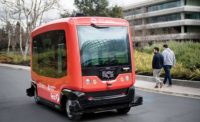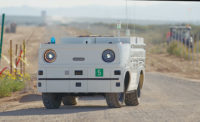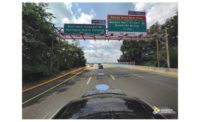Autonomous Vehicle Test Sites Help Accelerate Deployment

AV proving grounds such as Mcity provide multifaceted platforms for comprehensive technology tests.
IMAGE COURTESY OF MCITY/UNIVERSITY OF MICHIGAN OFFICE OF RESEARCH
Although on-street testing immerses AVs into real-world mobility environments, ensuring their reliability requires creating and evaluating as many “what if” scenarios as possible for a variety of vehicles. For that, many states have invested in proving-ground test sites that foster public-private collaboration across transportation agencies, academia, automakers and private-sector technology and communication firms.
Some, like the University of Michigan Mcity, were built specifically to simulate urban and suburban environments. Located on a 32-acre site on the school’s North Campus in Ann Arbor, Mcity includes nearly five lane-miles of multilane roads with intersections, traffic signs and signals, sidewalks, simulated buildings, street lights and obstacles such as hydrants and construction barriers.
Other AV test facilities have been adapted from previous uses. What was once a 5,000-acre Naval weapons station in Concord, Calif., is now GoMentum Station, a ready-made network of roadways that may be truer to “real-world” conditions than actual city streets. Randell Iwasaki, executive director at Contra Costa Transportation Authority, explains that while some areas of GoMentum Station have been updated with new street markings, the site’s preponderance of cracked pavement, old paint and faded signs is “exactly what AVs will encounter on regular roads.”
GoMentum Station is one of 10 facilities specifically designated by FHWA to form what then-Secretary of Transportation Anthony Foxx called “a community of practice around safe testing and deployment.” They help to accelerate the pace of deployment by sharing best practices for testing and operations.
Other states are taking a hybrid approach to AV testing. Along with designating 70 miles of suburban Washington, D.C., highways as AV test corridors, Virginia DOT has beefed up a section of Interstate 66 with wireless infrastructure units and two additional mobile-wireless units. They collect a variety of operational data from a 12-vehicle research fleet, including four motorcycles. WSP has begun working with Minnesota DOT to deploy a network of connected vehicle-support technology along a 9-mile stretch of Trunk Highway 55 outside Minneapolis.





